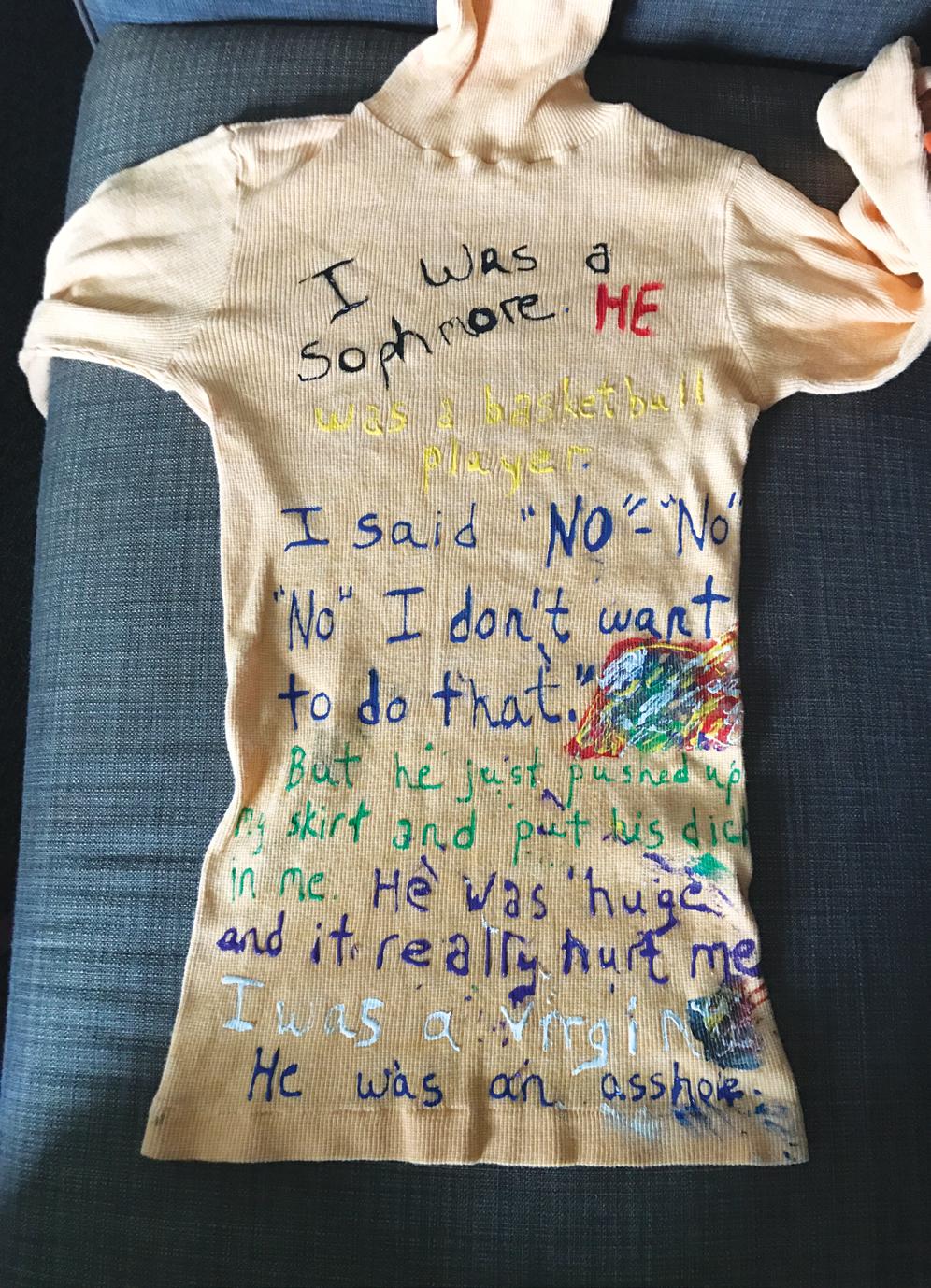
By Molly Wampler

Inspired by the power of the AIDS quilt, the Clothesline Project was launched in 1990 as a visual way to bring attention to the issue of violence against women. Survivors of sexual assault are invited to express the experience anonymously on a t-shirt to be hung in public on a clothesline. Puget Sound picked up the project more than 15 years ago, but the clothesline has only been displayed on and off since.
Last year’s Clothesline Project, displayed for some time in the dining area of Wheelock shed light onto “what it feels like to be sexually assaulted and how power-based personal violence impacts someone on such a personal, deep level,” Alex Keysselitz, Sexuality Issues, Relationships, and Gender Education (SIRGE) Coordinator, said.
“As with all my work with sexual assault prevention,” Marta Cady, Associate Dean of Students and Director of New Student Orientation, said, “the more we talk about it the easier it is to work through for victims and survivors, and the easier it is for other people to understand it and hopefully want to do something about it.”
The symbolism behind the project is extensive. Each color shirt holds different meaning; for example: the red, pink and orange shirts are for survivors of rape and sexual assault; blue and green t-shirts are for survivors of incest and sexual abuse; and white represents women who have died from violence. The clothesline, referencing laundry that has historically been considered “women’s work,” acknowledges the reality that women are impact more frequently by these crimes, the Clothesline Project website says. Marta Cady, Associate Dean of Students and Director of New Student Orientation, explained that this project also serves as a way to remove the stigma of having to “air out your dirty laundry” that is sexual assault. She doesn’t believe survivors should feel they have to hide or feel shame about the incident, she said, “we need to just be supportive of people who come and tell us this stuff.”
Shirts designed by members of the Puget Sound community are saved to display year after year. Every Wednesday and Friday from 8:30-6 p.m. in April, the Student Development Center (on 15th street, across from Security Services) has materials and a quiet, anonymous space for survivors to make a shirt of their experience. “It gives survivors a space to share their voice in a way that completely anonymous but that is lasting,” Keysselitz said.
“This project is more directed towards people who have experienced personal violence,” Keysselitz said, but allies can accompany a friend if they need the extra support.
Puget Sound’s mission with these shirts varies slightly from the Clothesline Project as a whole. Keysselitz emphasized that Puget Sound’s project thinks more “intersectionally about sexual violence,” and Cady agrees. “This is violence against people who have perceived less power,” Cady said, “and lots of times that can be women,” but it is often not. “Particularly for men, we know before the age of 18 one in 33 have been abused,” Cady said, “As a boy they are able to put their stories in there too.”
Keysselitz is proud of where our University stands in sexual misconduct awareness, but it isn’t without flaws. “It can always be talked about more, there is always room for improvement to create spaces where survivors are heard and believed and not questioned,” she said.
“[Sexual violence] happens — everywhere on every campus; in every facet of life, and I think our campus does a good job of talking about it,” Keysselitz said, “but I want people to engage more … When you engage with it and you hear personal stories, and you find resources. That is when real change happens.”
